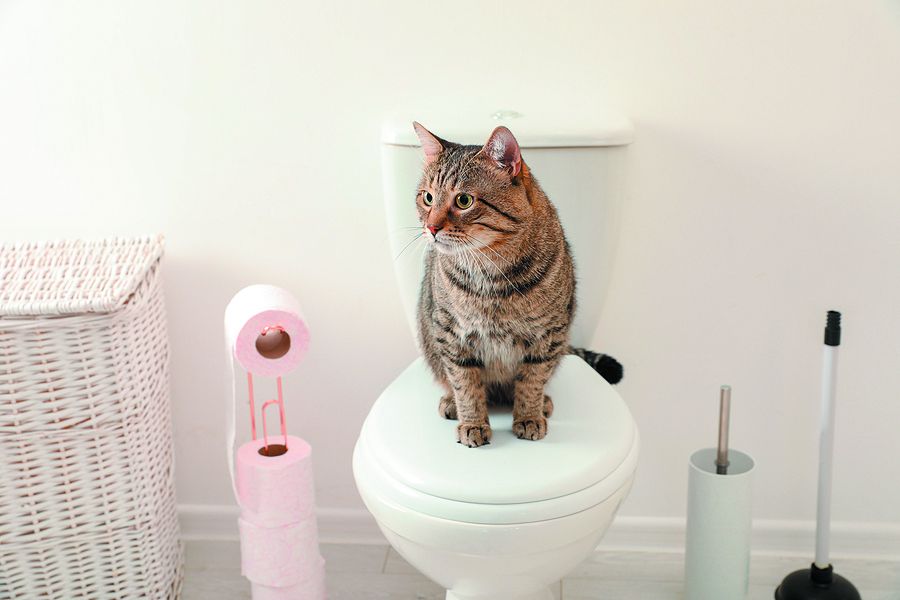Prevent Plumbing Problems: Never Flush Cat Poop Down Your Toilet - Expert Guidance
Prevent Plumbing Problems: Never Flush Cat Poop Down Your Toilet - Expert Guidance
Blog Article
Have you been trying to find critical information about How to Dispose of Cat Poop and Litter Without Plastic Bags?

Intro
As pet cat proprietors, it's important to bear in mind exactly how we take care of our feline friends' waste. While it might seem hassle-free to flush pet cat poop down the toilet, this method can have detrimental repercussions for both the setting and human wellness.
Alternatives to Flushing
Luckily, there are safer and more responsible ways to dispose of pet cat poop. Take into consideration the following alternatives:
1. Scoop and Dispose in Trash
The most common method of dealing with pet cat poop is to scoop it right into an eco-friendly bag and toss it in the garbage. Make certain to make use of a specialized clutter scoop and take care of the waste without delay.
2. Use Biodegradable Litter
Go with naturally degradable pet cat litter made from materials such as corn or wheat. These litters are environmentally friendly and can be securely taken care of in the garbage.
3. Bury in the Yard
If you have a lawn, think about hiding pet cat waste in an assigned location away from veggie yards and water resources. Be sure to dig deep sufficient to prevent contamination of groundwater.
4. Install a Pet Waste Disposal System
Buy an animal garbage disposal system particularly designed for feline waste. These systems make use of enzymes to break down the waste, minimizing odor and environmental influence.
Wellness Risks
Along with ecological concerns, purging feline waste can also pose health and wellness risks to people. Feline feces may consist of Toxoplasma gondii, a bloodsucker that can cause toxoplasmosis-- a potentially serious health problem, specifically for expectant women and individuals with weakened immune systems.
Ecological Impact
Purging feline poop presents harmful virus and bloodsuckers right into the supply of water, positioning a substantial risk to water communities. These contaminants can adversely impact marine life and compromise water quality.
Verdict
Accountable animal ownership expands beyond providing food and sanctuary-- it additionally involves appropriate waste monitoring. By refraining from flushing cat poop down the toilet and selecting alternative disposal approaches, we can reduce our ecological footprint and safeguard human wellness.
Why Can’t I Flush Cat Poop?
It Spreads a Parasite
Cats are frequently infected with a parasite called toxoplasma gondii. The parasite causes an infection called toxoplasmosis. It is usually harmless to cats. The parasite only uses cat poop as a host for its eggs. Otherwise, the cat’s immune system usually keeps the infection at low enough levels to maintain its own health. But it does not stop the develop of eggs. These eggs are tiny and surprisingly tough. They may survive for a year before they begin to grow. But that’s the problem.
Our wastewater system is not designed to deal with toxoplasmosis eggs. Instead, most eggs will flush from your toilet into sewers and wastewater management plants. After the sewage is treated for many other harmful things in it, it is typically released into local rivers, lakes, or oceans. Here, the toxoplasmosis eggs can find new hosts, including starfish, crabs, otters, and many other wildlife. For many, this is a significant risk to their health. Toxoplasmosis can also end up infecting water sources that are important for agriculture, which means our deer, pigs, and sheep can get infected too.
Is There Risk to Humans?
There can be a risk to human life from flushing cat poop down the toilet. If you do so, the parasites from your cat’s poop can end up in shellfish, game animals, or livestock. If this meat is then served raw or undercooked, the people who eat it can get sick.
In fact, according to the CDC, 40 million people in the United States are infected with toxoplasma gondii. They get it from exposure to infected seafood, or from some kind of cat poop contamination, like drinking from a stream that is contaminated or touching anything that has come into contact with cat poop. That includes just cleaning a cat litter box.
Most people who get infected with these parasites will not develop any symptoms. However, for pregnant women or for those with compromised immune systems, the parasite can cause severe health problems.
How to Handle Cat Poop
The best way to handle cat poop is actually to clean the box more often. The eggs that the parasite sheds will not become active until one to five days after the cat poops. That means that if you clean daily, you’re much less likely to come into direct contact with infectious eggs.
That said, always dispose of cat poop in the garbage and not down the toilet. Wash your hands before and after you clean the litter box, and bring the bag of poop right outside to your garbage bins.
https://trenchlesssolutionsusa.com/why-cant-i-flush-cat-poop/

I'm certainly very inquisitive about How to Dispose of Cat Poop and Litter Without Plastic Bags and I really hope you appreciated the new article. Do you know another individual who is serious about the topic? Why not share it. Thank-you for going through it.
Go Services Report this page